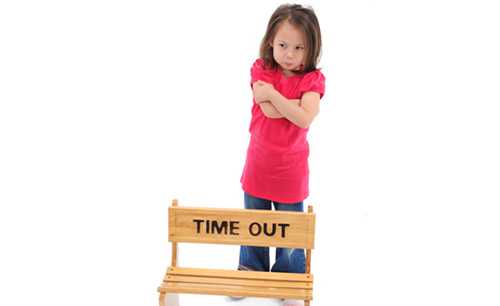Using Time-Out
Keys to Using Time-Out
- Explain time-out to your child before using it. Tell your child which behaviors will lead to time-out, where time-outs will happen, and how time-out will be used. You can also practice time-out with your child so she knows how it will work.
- Limit time-outs with toddlers and preschoolers. Use time-out if your child does something dangerous or harmful like hurting others, fails to follow a direction, or breaks a family rule. Use other types of consequences for other problem behaviors.
- Follow the 5 steps for time-out each time you use it. The 5 steps are the same no matter where you are.
- Select a time-out location where your child cannot get attention from anyone. The location should be away from TV, games, toys, or other things your child likes.
- Time-out can be used anywhere. You can even use it away from home. You can use a time-out blanket as a time-out location when you’re in public.
- Time-outs last between 2 and 5 minutes for toddlers and preschoolers.

LEARN MORE
Click through the links below to read articles, watch videos, and practice your skills for time-out.
Read More
- What is Time-Out?
- When Should Time-Out Be Used?
- Steps for Using Time-Out
- Handling Time-Out Challenges
- Locations and Other Keys for Time-Out
- Answers from Experts
- Quick Tips
Watch Videos
Practice Skills
Tips on Using Time-Out
- Ignore Behavior
- Try Using a Blanket
- Time-Out Should be Boring
- Use Time-Out as the Behavior Occurs
- Clearly Explain Why
Ignore behavior that is not harmful.
Time-out means that you remove all of your attention from your child. You do not talk to your child. You do not look at your child, and you do not touch your child. You should only react to your child in time-out if he does something dangerous or harmful. If you have to respond, do your best to stop what your child is doing without giving him any attention.
Try using a blanket as a time-out spot.
If your child misbehaves in public, you want to handle the behavior just like if you were at home. You can’t carry around the time-out chair or time-out corner with you everywhere you go. You can try using a blanket or something else that is small, foldable, and portable to put on the floor or in the grocery cart to use as a time-out space.
The time-out area should be boring.
The time-out space you choose should be very boring to your child. This means that the space should have nothing in it that your child can play with like toys, a rocking chair, or TV. The more boring the time-out space, the less your child will want to be there. If your child connects misbehaving with having to sit in the boring time-out space, he will be more likely to do the right thing to avoid the boring time-out!
Use time-out as soon as the behavior occurs.
Using time-out right after your child misbehaves will help your child connect the misbehavior to the time-out. If your child knows that misbehavior leads to a time-out, you should see less misbehavior in the future.
Clearly explain to your child why he is being put in time-out.
Tell your child, “You have to go to time-out because you hit your brother.” Say this in a calm but firm voice and avoid lecturing, scolding, or arguing with your child.
- Page last reviewed: August 24, 2016
- Page last updated: August 24, 2016
- Content source:


 ShareCompartir
ShareCompartir